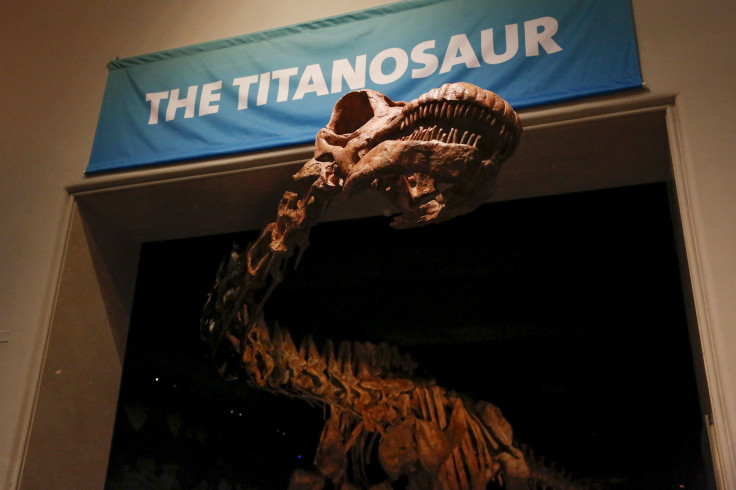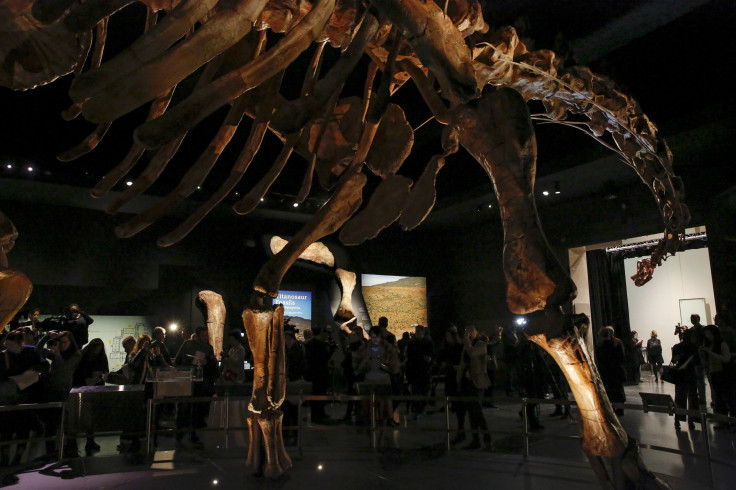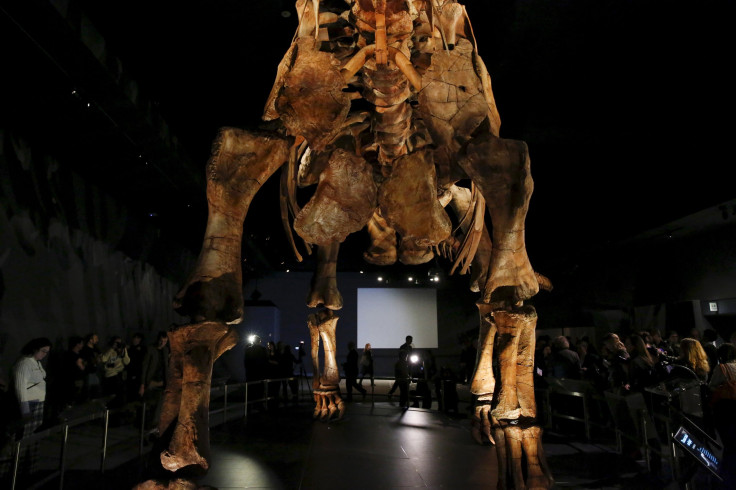What Is The Titanosaur? American Museum of Natural History Displays 'Biggest Dinosaur Ever Discovered' [PHOTOS]

The dinosaur dubbed the "biggest ever discovered" was unveiled Friday at New York’s American Museum of Natural History. The massive specimen, fittingly called the titanosaur, was found in a 2014 excavation in Argentina.
The sheer size of the dinosaur is difficult to process. The titanosaur weighed some 70 tons, or as much as 10 African elephants, according to the American Museum of Natural History. At the discovery site, scientists unearthed 223 fossil bones that belonged to six individuals of the new species, and the museum made its specimen using 84 of those fossil bones. Considering the dinosaur's thighbone alone weighed more than 1,000 pounds, the titanosaur on display in New York is made of fiberglass casts of the bones.

The display is so large it couldn't be contained in a single room at the museum, its head poking out a doorway toward the elevator banks. The cast is 122 feet in total, the neck measuring an impressive 39 feet. With its neck up, the titanosaur would have been tall enough to look into a five-story building, according to the museum.
"The animal is so gigantic that if we had put the neck going up, it wouldn’t fit," said Diego Pol, one of the paleontologists who excavated the species, according to The Wall Street Journal. The incredible size of the dinosaur apparently makes for an awe-inspiring experience.

"If you'd imagine proportions like this would make for an impressive display, you'd be absolutely right," wrote Ars Technica.
The unveiling of the specimen in New York marks the first time the massive herbivore that roamed Patagonia some 100 million years ago has been displayed for the public, American Museum of Natural History curator Mark Norell told CNN. Some of the best-preserved fossils will also be on display for a limited time.
#HowToBuildATitanosaur: The final step is assembling the #Titanosaur in its new Museum home https://t.co/0ORYt8Birn pic.twitter.com/bb5aIiVtUu
— AMNH (@AMNH) January 14, 2016
Check out a video below from the American Museum of Natural History that shows how the new display came to be:
© Copyright IBTimes 2024. All rights reserved.






















